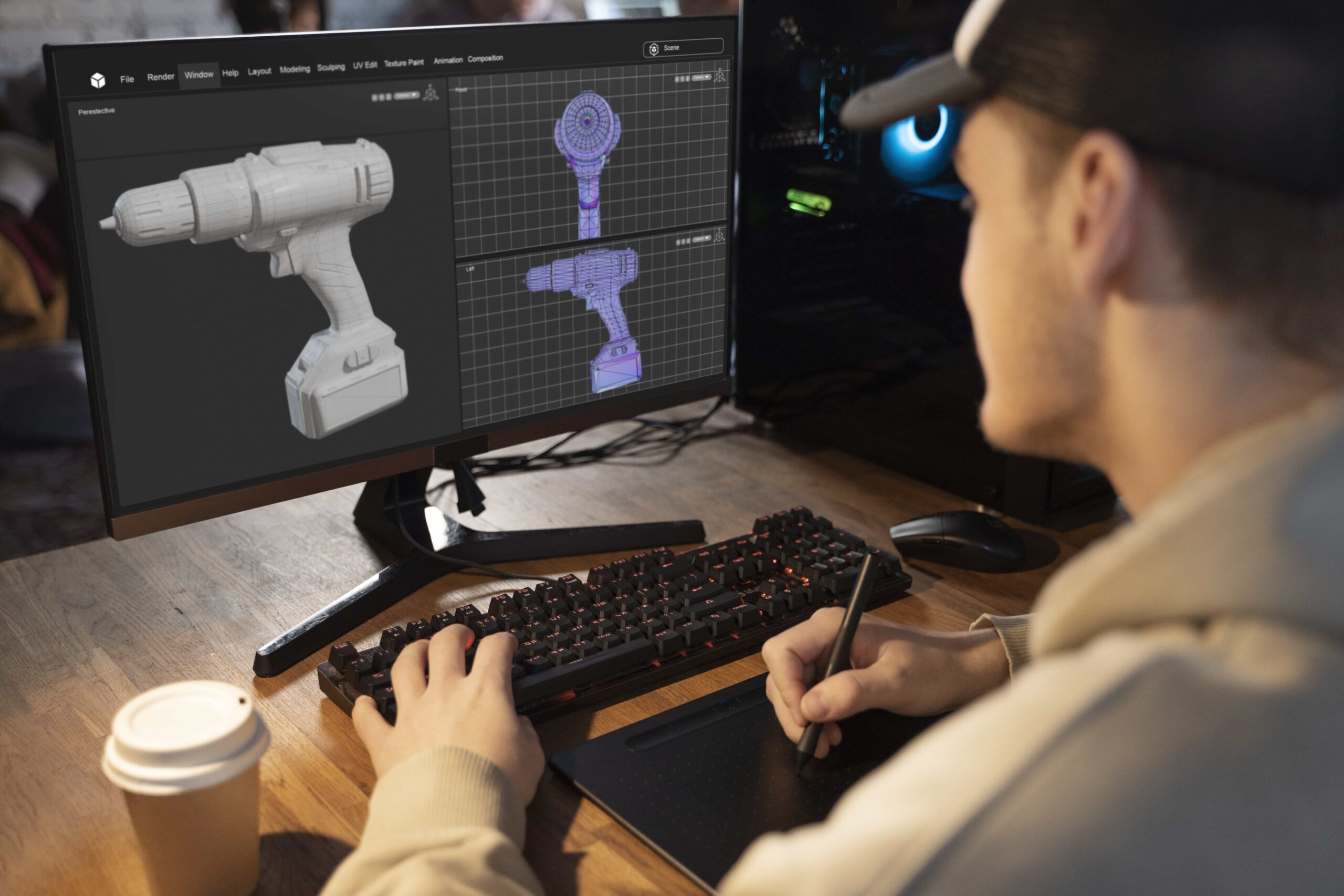
Nowadays, anime is a popular term around the world. People of all ages are fans of anime. But do you know how animes are made?
Anime, the captivating world of animated storytelling, is crafted by skilled animators who bring its characters and fantastical worlds to life. It is a distinctive form of animation originating from Japan, characterised by its colourful artwork, vibrant characters, and fantastical themes, showcasing the diverse possibilities within the animation industry.
Animation is becoming increasingly important in a variety of industries. In the film industry, animation creates special effects and brings animated characters to life. In the gaming industry, animation creates realistic and immersive worlds. In advertising, animation creates eye-catching commercials that capture viewers’ attention.
The demand for animators is expected to grow in the coming years. The Bureau of Labour Statistics projects that the employment of animators and multimedia artists will increase by 4% from 2020 to 2030, faster than the average for all occupations.
The base pay range of animators is £28,000K – £50,000K per annum. In this article, we’ll explore the pathway to becoming an animator. So, let’s start the informative journey.
Table of Contents
Who is an animator and what does an animator do?
An animator is an artist who works in various fields, including film, television, and video games and creates multiple images known as frames, giving an illusion of movement called animation when displayed in rapid sequence.
Animators often specialise in a particular animation area, such as character animation or special effects animation. Character animators focus on bringing characters to life through movement, dialogue, and acting. They craft each character’s expressions and gestures to convey emotions and tell the story.
Responsibilities of an animator
Creating animations contains multiple phases, such as idea generation, model construction, and setting up lighting.
The process of computer animation utilises CGI (computer-generated imagery) software.
Typical responsibilities of an animator include:
Collaborating with clients to transform their concepts into animations.
Crafting storyboards that visualise the script and story progression.
Producing 2D sketches, artwork, or illustrations.
Designing various elements like models, backgrounds, sets, characters, objects, and the overall animation environment.
Utilising diverse materials, including modelling clay, plaster, and different types of paints like oil, watercolour, and acrylic.
Determining the timing and rhythm of a character’s or object’s movements across a series of images to match the soundtrack and audio needs.
Employing specialised software tools such as Flash, 3ds Max, Maya, LightWave, Softimage, and Cinema 4D.
Creating detailed, frame-by-frame visuals with precision.
Recording dialogue and collaborating with editors to combine different animation layers (like backgrounds, special effects, characters, and graphics) to create the final output.
Adhering to production timelines and fulfilling the commercial needs of clients.
Working within a larger production team which may involve interactions with printers, copywriters, photographers, designers, account executives, web designers, or marketing experts.
Handling diverse business cultures, presenting ideas, and securing funding.
Being proactive in marketing your ideas and work to potential customers and clients is essential, regardless of whether you are self-employed, freelancing, or employed within an organisation.
Tools used by the animators
Animators use a wide range of tools to bring their creations to life, blending traditional art techniques with modern digital technologies. Some of the key tools used by animators include:
Animation Software
2D Animation Tools: Adobe Animate, Toon Boom Harmony, TVPaint, and Moho for traditional and digital 2D animation.
3D Animation Software: Autodesk Maya, Blender, Cinema 4D, and 3ds Max are popular for creating 3D models, environments, and animations.
Stop Motion Software: Dragonframe and Stop Motion Studio are used for stop motion animation.
Graphics Tablets and Drawing Devices
Wacom tablets, iPads with Procreate or Adobe Fresco, and other stylus-equipped tablets are crucial for digital drawing and frame-by-frame animation.
Computer Hardware
Powerful computers with high processing power, good graphics cards, and ample memory are essential for running heavy animation software efficiently.
Storyboarding Software
Storyboard That, FrameForge, and Adobe Story are used to create and organise storyboards.
Motion Capture Equipment
For more advanced 3D animations, motion capture suits and systems like Vicon or Perception Neuron are used to capture real-life movements.
Rendering Software
Programs like RenderMan, V-Ray, and Arnold are used to render high-quality visuals from 3D animation software.
Video Editing Software
Adobe Premiere Pro, Final Cut Pro X, and DaVinci Resolve are used for editing animation, adding effects, and finalising the sequence of scenes.
Sound Editing Tools
Software like Adobe Audition and Audacity are used for recording and editing soundtracks, dialogue, and sound effects.
Traditional Tools
Pencils, paper, light boxes, and erasers are still used, especially in the initial stages of character design and storyboarding.
Collaboration and Project Management Tools
Tools like Slack, Trello, and Asana help in team collaboration and project management, which is especially important in larger animation projects involving multiple team members.
The choice of tools often depends on the project’s specific requirements, the animator’s preference, and the animation style produced.
For the newbies and aspiring animators, we have a course developed by industry experts, which you may have a look at!
Pathways for Becoming an Animator
Becoming an animator typically involves a combination of formal education, skill development, and practical experience. The essential requirements include:
Education and Training:
Degree or Diploma: Many animators have a bachelor’s degree in animation, computer graphics, art, or a related field. Some positions may require only a diploma or certificate in animation or multimedia.
Specialised Courses: Enrolling in courses focusing on drawing, computer graphics, animation, and filmmaking can be beneficial.
Technical Skills:
Proficiency in Animation Software: Knowledge of software like Adobe After Effects, Maya, Blender, and Cinema 4D is crucial.
Drawing and Artistic Skills: Strong drawing skills are essential, especially for 2D animation. Understanding colour theory, typography, and graphic design can also benefit.
Creativity and Storytelling:
An innate sense of creativity and a good understanding of visually telling a story is essential. This includes character development, visual metaphors, and narrative pacing.
Portfolio and Demo Reel:
Developing a solid portfolio and demo reel showcasing your best animation work is critical for attracting employment opportunities.
Work Experience:
Experience gained through internships, freelance work, or entry-level studio positions can be valuable. It helps in understanding real-world workflows and project demands.
Attention to Detail:
Animators must have a keen eye for detail to ensure every aspect of the animation aligns with the project’s objectives, including the movement, timing, and emotional expression of characters.
Communication Skills:
Good communication and teamwork skills are necessary for collaborating effectively with other animators, directors, designers, and clients.
Adaptability and Continuous Learning:
The field of animation is constantly evolving with new technologies and techniques. Being adaptable and committed to continuous learning is essential.
Time Management Skills:
Managing time effectively and meeting deadlines is crucial, especially when working on projects with tight schedules.
Passion for Animation:
A genuine passion for animation, film, and storytelling can drive this career, helping animators stay motivated and creative.
While formal education is helpful, many animators also learn and refine their skills through self-study, online tutorials, and practice. Building a network within the animation community and staying abreast of industry trends can also provide valuable opportunities and insights.

Career Prospects as an Animator
The UK is notably renowned for its expertise in stop-motion and children’s animation and boasts a potent computer games sector. However, the field of animation is international, and specialising in a specific style may require relocating overseas.
The United States hosts many of the largest studios in animation, CGI special effects, and video games. Additionally, a significant portion of 2D animation production occurs in East Asia. To expand their client base, animators from the UK are increasingly seeking opportunities abroad and domestically.
Career development in animation depends on versatility. Skilled in techniques such as puppetry, model-making, traditional drawing, and computer generated animation can open more career paths.
For animators, another career advancement option is transitioning into roles in education, such as teaching or academic lecturing.
Pursuing a career as an animator in the UK can be both exciting and challenging. Here are key aspects to consider:
Industry Growth and Opportunities: The UK has a thriving creative industry, including animation. With the rise of digital media, there’s a growing demand for animators in various sectors, such as film, television, advertising, video games, and web design. This growth offers diverse opportunities for animators to work in different genres and styles.
Skills and Education: To succeed as an animator, you’ll need a combination of artistic talent and technical skills. Most animators have a degree in animation, visual arts, or a related field. Continual learning is essential as technology and software in the field evolve rapidly.
Specialisations: Animators can specialise in 2D animation, 3D animation, stop-motion, or computer-generated imagery (CGI). Each area requires specific skills and knowledge, so consider which specialisation aligns with your interests and strengths.
Portfolio Development: A strong portfolio showcasing your best work is crucial for securing jobs. It should demonstrate your creativity, style, and technical skills. Involvement in projects, internships, or collaborative works can enhance your portfolio.
Freelance vs Studio Work: Many animators work as freelancers, taking on various projects from different clients. Others prefer the stability of working in a studio. Freelancing offers flexibility and variety but requires strong self-management and networking skills.
Networking and Community: Engaging with the animation community through events, forums, and social media can lead to job opportunities and collaborations. Networking is vital for career growth, especially in a creative field like animation.
Location: Certain areas in the UK, like London, Manchester, and Bristol, are hubs for the creative industry and may offer more opportunities. However, remote work is also becoming common in this field.
Salary Expectations: Salaries vary depending on experience, specialisation, and the type of employer. Entry-level positions might start lower, but there is significant potential for growth as you gain knowledge and reputation.
Job Stability and Workload: The animation industry can be project-based, leading to intense work followed by slower periods. This can affect job stability, especially for freelancers.
Continued Learning and Adaptation: Staying updated with the latest software, trends, and techniques in animation is key. Continuous learning and adaptation are necessary to remain relevant in the field.
Overall, a career in animation in the UK can be highly rewarding for those who are passionate, creative, and willing to develop their skills continually. The industry’s dynamic nature requires artistic talent and a willingness to adapt to new technologies and trends.

Conclusion
In conclusion, embarking on a journey to become an animator is both a challenging and rewarding pursuit. It requires combining creative talent, technical skill, and a relentless passion for storytelling and visual art. Whether you’re drawn to traditional 2D animation, captivated by the complexities of 3D CGI, or delighted by the tactile world of stop-motion, there is a niche for every aspiring animator.
Education forms the foundation of this career path, but practical experience, continual learning, and portfolio development are equally crucial. Remember, your portfolio is your strongest asset in showcasing your unique style and skills. So, embracing every opportunity to learn through formal education, online tutorials, or hands-on experience is important.
The animation industry is dynamic and ever-evolving, so staying adaptable and up-to-date with the latest software and trends is vital. Networking and building professional relationships will open doors to opportunities that might not be accessible otherwise. And while the prospect of freelancing or working internationally might seem daunting, it can offer a wealth of experience and a broader perspective on the global animation landscape.
Finally, remember that a career in animation is not just about technical prowess; it’s about storytelling, creativity, and bringing ideas to life. It’s a path that allows you to express your artistic vision and contribute to the magic of animated worlds. So keep sharpening your skills, stay inspired, and embrace the journey of becoming an animator with enthusiasm and determination.
- All Courses
- IT & Software317
- Management263
- Teaching and Education229
- Business219
- Health and Fitness216
- Health & Safety155
- Engineering & Technology141
- Quality Licence Scheme136
- Health and Social Care128
- Healthcare123
- Accounting & Finance111
- Psychology96
- Lifestyle94
- Employability91
- Marketing75
- Office Productivity59
- Animal Care55
- Design and Photography48
- Beauty & Makeup43
- Design39
- Accounting & Bookkeeping32
- Web Development11
- Child Care8
- Construction7
- Agriculture5
- Environment1
Awarded By





0 responses on "How to Become an Animator"